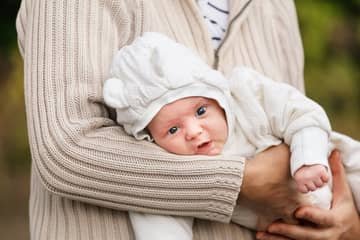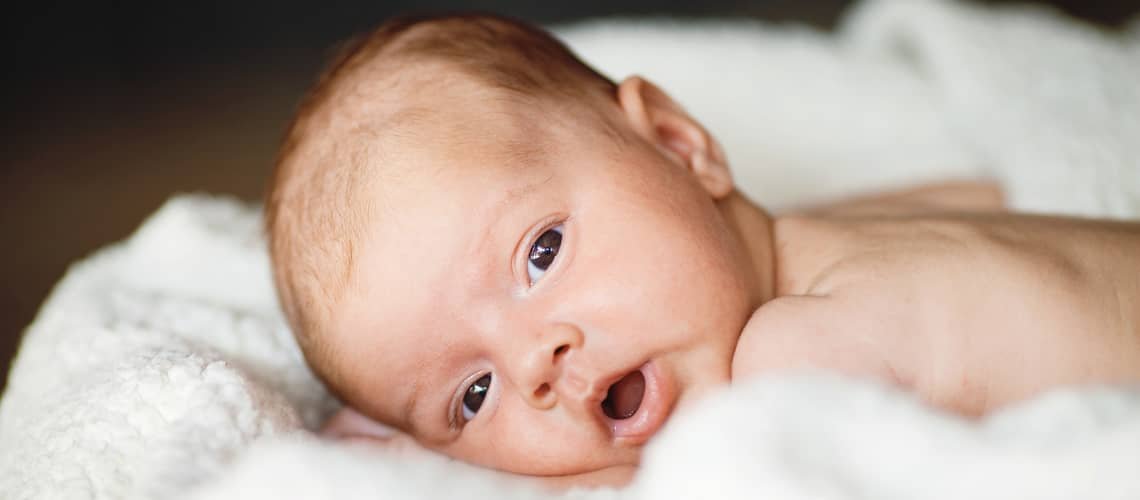
Newborn vision - how babies see. Is squinting and eye rolling okay?
Have you ever wondered how a newborn baby sees after birth? It may surprise you that sight - visual perception is the least developed sense in a baby after birth. Even after the newborn leaves the mother's womb, he can only perceive visual stimuli to a very limited extent. So it takes some time before the baby is able to perceive the world around him with his eyes. However, the process of improving the quality of vision is relatively fast and is closely related to the development of the brain. How far can a newborn see after birth? How does the baby see in the 6th week? What does newborn squinting mean and how does it manifest itself?
A newborn's vision after birth in the first days and weeks is far from perfect, but it develops quickly after birth. Progress in the development of vision in newborns can be characterized on the order of weeks or months, which bring with them natural changes. Myopia and the inability to focus on objects are typical for newborns, which is why small newborns are often prone to the so-called mother's distance - the child is able to see only at a very short distance. Gradually, the ability to perceive light, distinguish colors, the focal distance increases, the ability to perceive shapes, and even the color of the newborn's eyes changes.
Development of vision of the newborn
The development of a baby's vision begins as early as the 2nd month of being in the womb and lasts approximately until the 30th week. Subsequently, a newborn's vision develops intensively after birth until about the 12th month, but it continues even after this period, and the development of visual perception occurs until the 5th to 6th year of life, when the child should reach the level of "adult" vision. At the same time, the development of vision is very closely connected with the development of the brain, and until absolute visual development, the child's vision is sensitive to the emergence of some visual disorders (myopia, farsightedness, squinting or astigmatism). From the parents' point of view, it is important that they pay attention to the individual stages of vision development in the baby and notice any abnormalities or deviations that could mean certain vision disorders.
It is necessary to perceive the fact that every baby is also individual in this respect and vision develops at a certain pace. Compared to peers, the baby may lag behind, but this does not automatically portend a bad scenario. You can read the individual periods - the stages of vision development, which can help you at least roughly orient yourself and allow you to follow certain changes in the development of the baby's vision.
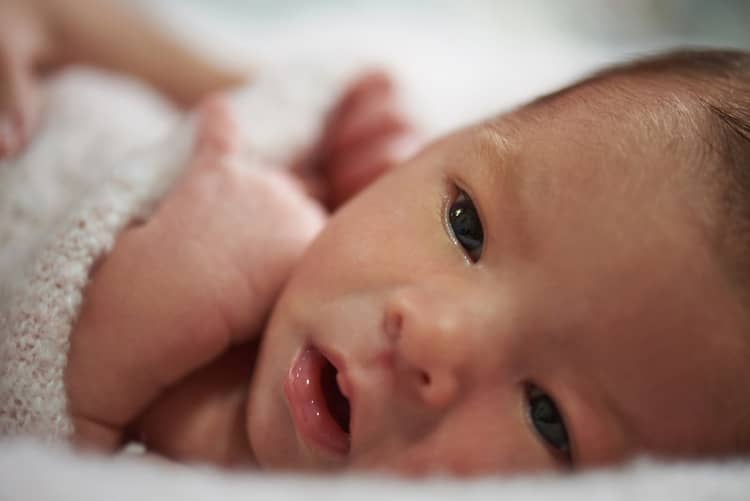
Vision of a newborn after birth
How does a newborn see? Immediately after birth, newborns see relatively poorly. They primarily react to changes in light and darkness with their eyes. After birth, some children's eyes are only slightly squinted, because they suddenly find themselves under the spotlight from the darkness of the womb. Other babies have their eyes open for a change and look at objects in front of them. They only react to light by blinking and their eye movements are uncoordinated. Squinting may occur in the newborn (strabismus), but this is normal at this stage. Similarly, rolling of the eyes can also occur, which is caused by the baby's weak eye muscles. The newborn is not yet able to correct eye movement, especially when it comes to the perception of moving objects. They mostly perceive only the outlines of objects. After birth, babies see very blurry and hazy. And does the baby already see in color? Around the 2nd week, babies develop the ability to perceive different color tones, but they cannot yet distinguish between them. More detailed color vision develops around the 4th month.
Newborns up to about 1 month are extremely myopic and can only focus effectively at a distance of 20 to 30 cm. This rate is considered the so-called maternal distance, in which the mother holds the child in her arms and breastfeeds him, while the child looks up at the mother's face. During this period, it is good if you talk to the baby from a close distance, because even if focusing is still problematic, he can perceive objects in his short focal distance. In the 1st month, the child can already follow moving objects, but still only at "mother's distance". At this age, he can already turn his eyes and head towards the light or contrasting moving objects (colors such as red, deep green or orange) and tries to maintain eye contact. The mentioned squinting can be a sign that the child is trying to fix objects with both eyes in parallel. Still, this status may not indicate any problem.
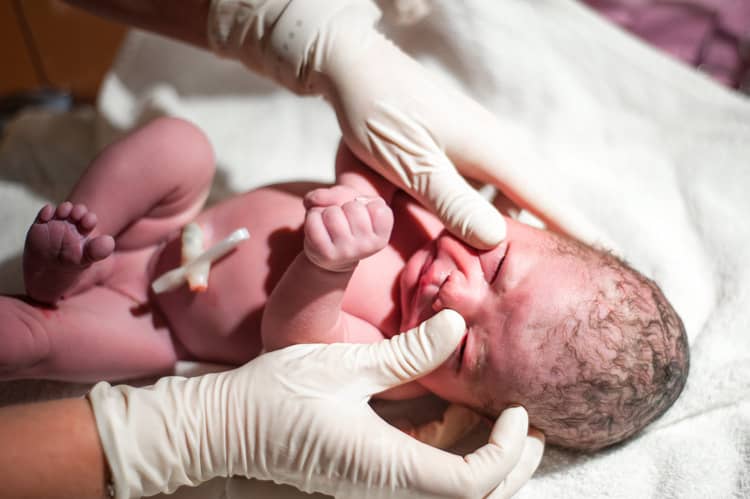
Vision of a baby at the age of 2-3 months
The child is already starting to recognize faces and the ability to focus on objects at a greater distance, approximately a few units of meters, is also gradually increasing. The child is already starting to successfully coordinate eye movements and should be able to fixate objects with both eyes in parallel. Even at this stage, occasional squinting of the child may still appear, which is mostly physiological. However, if you notice that the squinting is not temporary, but persists, it is advisable to consult a pediatrician and agree on the next procedure.
The interesting thing is that between the 1st and 2nd month, tears start to form in the baby. At this age, the child is interested in his hands and feet, but also in everything that flashes before his eyes, including parents and other family members. Sound and moving toys, carousel above the bed, can engage a baby at this age very effectively. The baby successfully focuses and follows everything that appears in its field of vision.
Seeing a baby in the 3rd to 6th month
The cooperation of the eyes is coordinated with the movement and the level of visual perception is significantly better and more responsive. The child watches the objects and tries to catch them or point to them. Recognizing faces is no longer a problem and around 4-5 months he can recognize facial features and details. Children are already starting to follow their surroundings peripherally, and at the age of 4-6 months they should have no problem focusing at any distance. Gradually, the child can follow the object and grasp it at the same time. Efforts to open and close the palm in order to grasp the object can therefore be observed. Toys become an eminent object of interest and the baby's color vision develops fully around the 4th month.
Eye movement is already coordinated in a six-month-old child and the eye muscles are more developed. The squinting or rolling of the newborn's eyes should thus completely disappear at this stage of vision development. If this is not the case, definitely do not wait to visit the pediatrician. The diagnosis of any eye disorder is suitable.
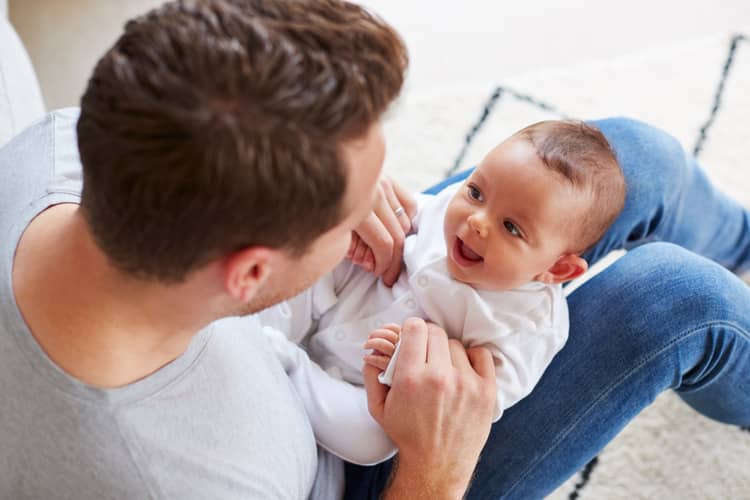
A child's vision between 6 and 12 months
During this period, the child's vision and visual perception are already developed at the level of approximately 60 to 80%. Of course, the development continues until about 5 to 6 years. At the age of 12 months, the child shows permanent visual perception and the child shows interest in moving objects. Healthy vision is already sharp and clear. During this period, the baby's spatial vision is also formed. If the color of the newborn's eyes has not changed until now, between 6 and 12 months, it is possible that due to the production of melanin in the iris, the eyes may change their color or shade. The fact that the brain and vision are closely connected is also evidenced by the fact that at 12 months the child is already actively using fine motor skills and developing visual memory, for example through picture books.
You can stimulate the development of vision mainly by keeping the baby's visual perception busy. Communicate with him and maintain eye contact with him. You can support his visual perception with colors, a merry-go-round above the crib or colorful socks. As the child gets older, treat him to toys in contrasting colors. Change the light in the room. Even with such little things, you can positively stimulate your child's vision.
The most common vision disorders in children
The connection between brain development and vision development is very close. Any developmental disorder will cause a mismatch, which can manifest as a subsequent visual impairment. Therefore, we recommend that you visit a pediatrician or a specialist if you notice deviations or certain signs of abnormal vision development in your child.
- Strabismus - if squinting is very common in children even in the first weeks after birth, then it can only be physiological. If it persists even in the 3rd month, a consultation with a doctor is appropriate. Squinting means that the eyeballs have an asymmetrical position, which prevents the eyes from working properly. Vision is thus of lower quality and the image is shifted. A frequent concomitant eye disease is the development of amblyopia. It is advisable to start the treatment at an early age. There are several types of squinting, but each type can be successfully treated.
- Amblyopia - also known as amblyopia is a functional vision disorder that causes impaired visual acuity. Children are sensitive to the development of this disease up to the age of 7. The main symptoms are the child's misjudgment of distance, poor spatial vision, tripping or clumsiness. Amblyopia can also be manifested by closing one eye. Most often, such a disorder is solved with dioptric glasses.
- Astigmatism – this eye disease is caused by the irregular curvature of the cornea, which does not have a regular hemispherical shape. For this reason, light converges incorrectly on the retina and a distorted and out-of-focus image is created. Astigmatism causes the image to be distorted at short and long distances. The vision is thus distorted and correction is made possible by glasses or lenses. Eye surgery is also possible at a later age.
- Hyperopia - or farsightedness is a refractive vision disorder in which the child has a problem with near vision. This disease is often hereditary, it manifests itself in the fact that a blurred or foggy image is formed on the retina of the eye. With problems with farsightedness, squinting or amblyopia may also appear.
- Myopia - or short-sightedness causes the human eye to see objects in the distance vaguely and hazily. A typical symptom is that if the child wants to see objects in the distance, he squints both eyes, cannot see the blackboard or the TV well. Distant objects are more difficult to observe, and one often sees only the outlines of the given object.
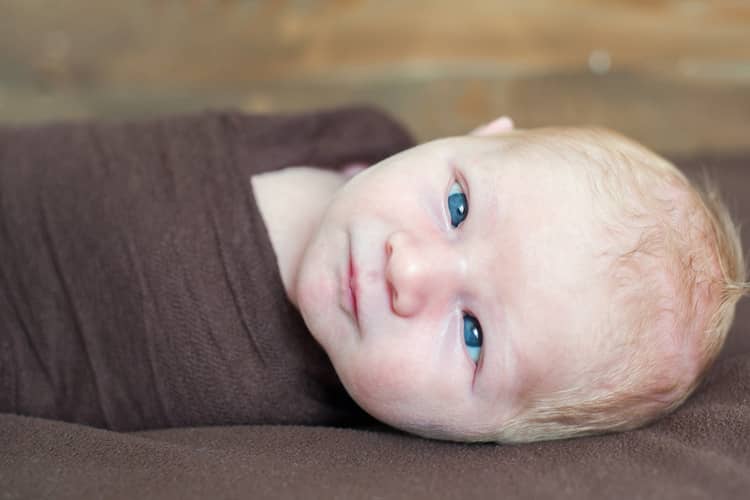
The most frequent questions - FAQ
A newborn's vision develops already in the womb, from approximately the 8th week of pregnancy. However, development does not end even after the child is born. How does a newborn's vision develop? How do babies see? You can find the most important information in our article. If you have your own observations, tips or recommendations related to this topic, we will be happy if you join the discussion below the article and contribute your opinion.
How does a newborn see after birth?
What does eye rolling in newborns mean?
When does a baby see in color?
How do I know if the baby can see?
Pridať komentár



